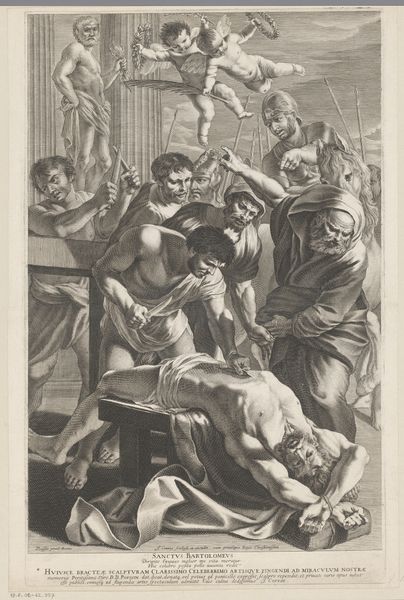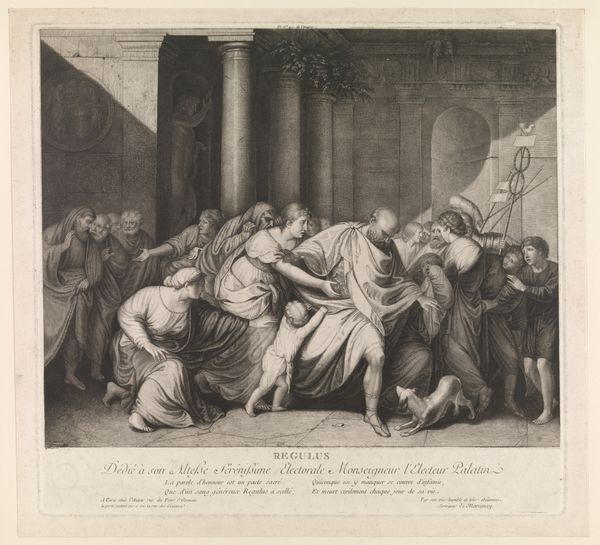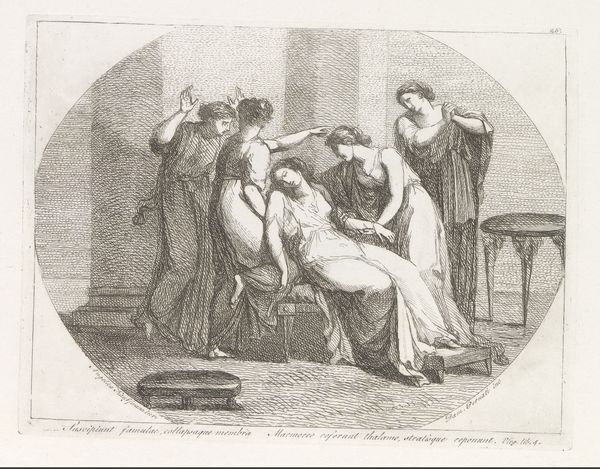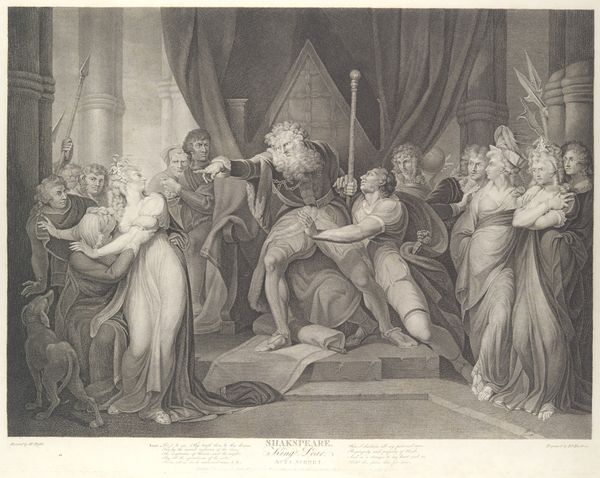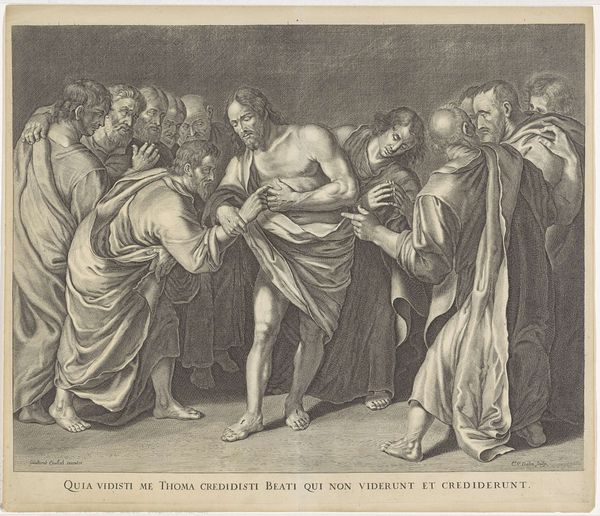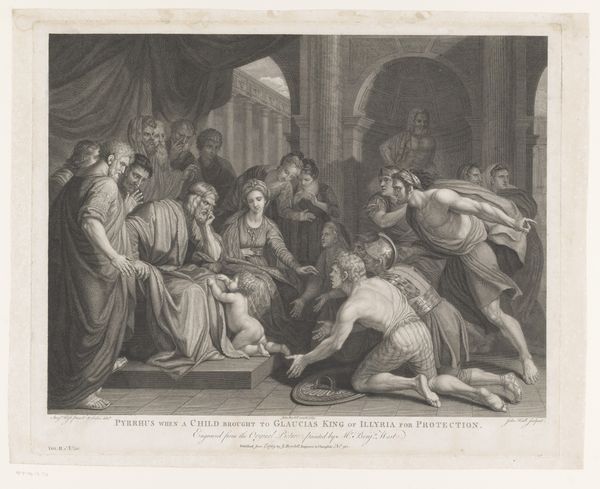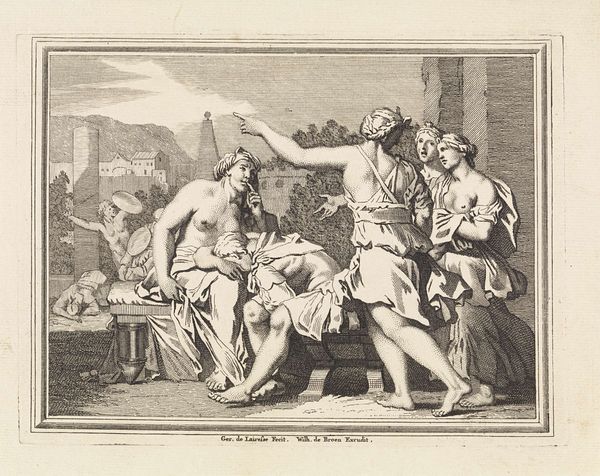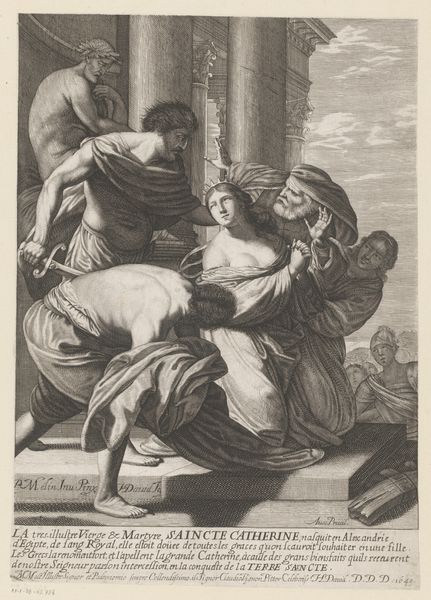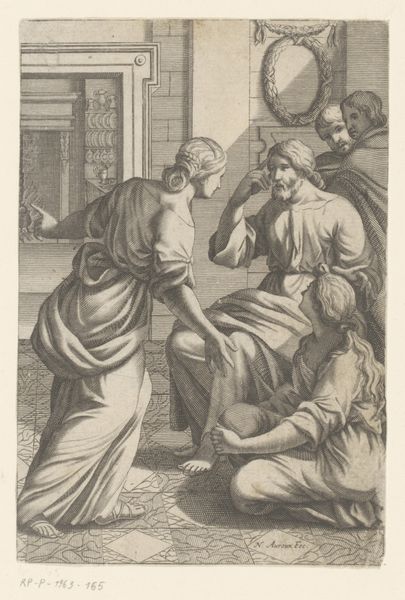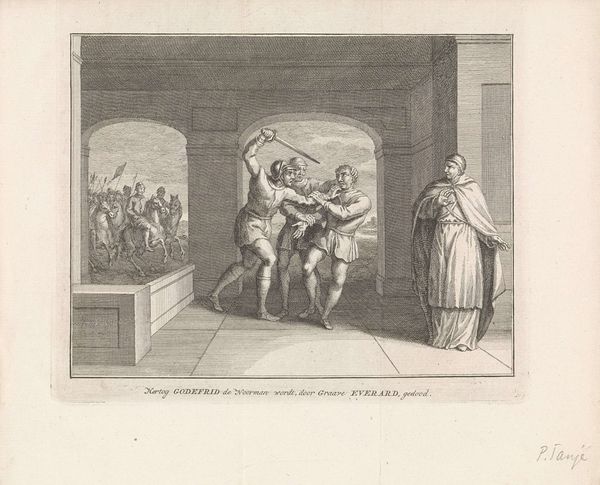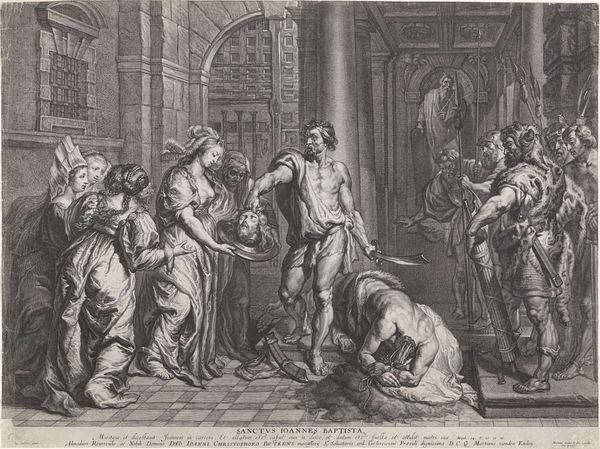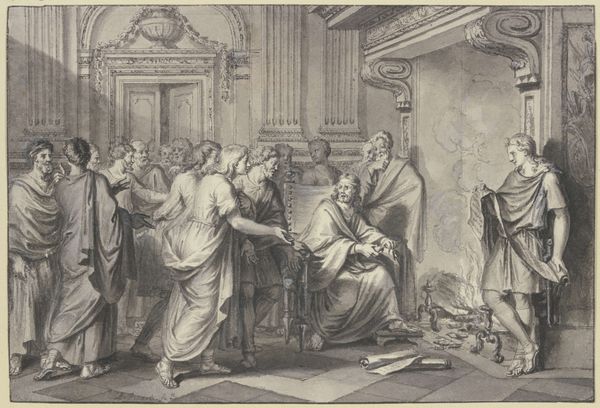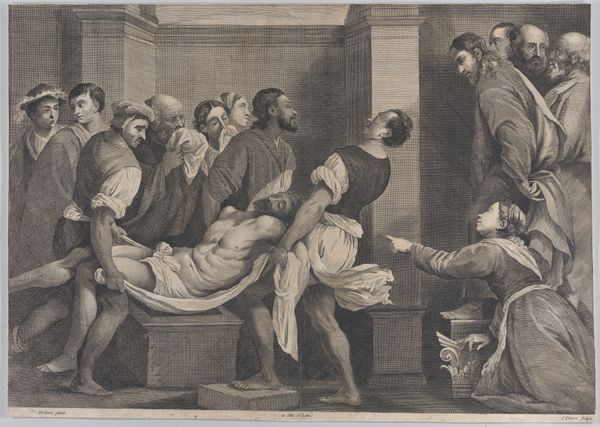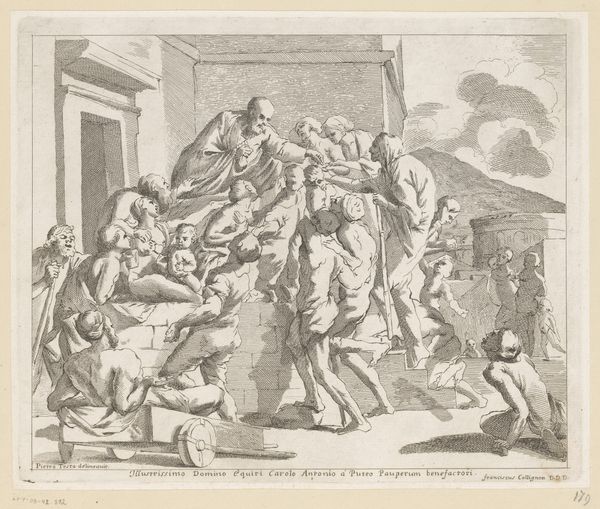
Christ driving the merchants from the temple 1724 - 1734
0:00
0:00
drawing, print, engraving
#
drawing
#
narrative-art
#
baroque
# print
#
figuration
#
history-painting
#
engraving
Dimensions: Plate: 9 5/16 × 13 1/4 in. (23.7 × 33.7 cm) Sheet: 20 7/8 × 15 1/4 in. (53.1 × 38.7 cm)
Copyright: Public Domain
Curator: My, what a tumultuous scene. I am immediately struck by the raw emotion etched on each figure’s face. Editor: Indeed. Here we have "Christ driving the merchants from the temple," an engraving by Jean-Baptiste Haussard, created sometime between 1724 and 1734. Currently, it resides at the Metropolitan Museum of Art. Curator: The composition is intensely dynamic. Observe the dramatic diagonals formed by Christ's raised arm wielding the whip, countered by the chaotic dispersal of the merchants. The light and shadow play masterfully accentuates this frenzy. The sharp, clean lines characteristic of engraving create a fascinating contrast with the messy scene. Editor: I'm particularly interested in the context of this image. We see here a critique of commercialism infiltrating sacred spaces, a powerful social commentary in an era when the Church's authority was increasingly questioned. How interesting that an artwork illustrating what many consider moral outrage would make it into the Royal Cabinet, which perhaps suggests the crown sympathized or considered this a political talking point. Curator: Precisely, and let's not overlook the significance of this being a print. The choice of printmaking allowed for broader dissemination of this narrative, amplifying its message. Notice how the artist's skillful use of line weight and density constructs volume and texture, enhancing the drama. Editor: The very act of depicting Christ with such unrestrained anger challenges the conventional image of serene piety. It makes one wonder how this image was received and used politically or religiously, what sorts of audiences consumed and projected it in 18th century France? The question becomes: who gets to define "sacred" space and on what terms? Curator: A valid point. Considering the art’s historical impact enriches our present perception. But looking just at the artwork, the power comes from that interplay of order and chaos, a visual embodiment of conflicting forces within the human spirit. Editor: Well, pondering the tensions between spiritual purity and social corruption has certainly made this experience a worthwhile one. Curator: I agree, diving into the interplay between the composition's dynamism and the historical context truly heightens our appreciation of the work.
Comments
No comments
Be the first to comment and join the conversation on the ultimate creative platform.
